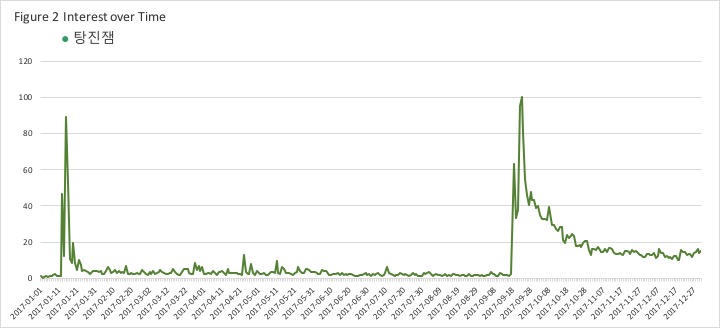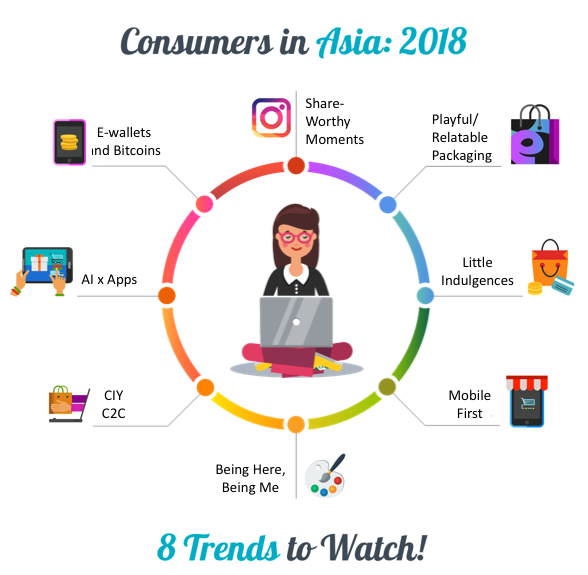Editor’s note: Kaysha Yonehara is digital marketing assistant at sample and survey software firm dataSpring, Tokyo.
Consumer preferences in Asia are changing more rapidly than other areas of the world. With an expanding middle class and advances in technology, consumers in Asia are looking for ways to enhance their lives. One key way they are doing this is by seeking improved shopping experiences.
In order for brands to improve the consumer experience, it is important to consider the factors influencing the buying decisions of Asian consumers.
1. Share-worthy moments
Consumer behavior adapts right along with the evolution of social media and technology. Social media penetration has risen significantly in the past few years with no end in sight. Asian consumers want and like to share what they’re doing in real-time. Brands, end-clients such as FMCGs and retailers should focus on creating content that can be used for social media or put on social media for sharing.
For many, this means an increased focus on mobile. Why? Because consumers are watching and sharing moments via social media on their phones.
For example, the word インスタ映え(Insta-bae), meaning Insta-worthy/Insta-grammable, was voted one of the words of the year for 2017. This year, many companies in Japan have focused their marketing efforts on the keyword Insta-bae hoping to catch the attention of this growing trend. The word is expected to grow in the coming months (Figure 1).
 Japanese media has similar words pertaining to Instagram meant for moments worthy of sharing, including videogenic, movie-genic and photogenic. A good example of this is New York's Dominique Ansel Bakery, which has been making big waves in Tokyo. Having made the morning news several times for offering movie-genic treats, the bakery is said to have lines with wait times of 30 minutes to four hours.
Japanese media has similar words pertaining to Instagram meant for moments worthy of sharing, including videogenic, movie-genic and photogenic. A good example of this is New York's Dominique Ansel Bakery, which has been making big waves in Tokyo. Having made the morning news several times for offering movie-genic treats, the bakery is said to have lines with wait times of 30 minutes to four hours.
2. Playful/relatable packaging
Consumers will share something with their friends if it looks good and are more aesthetically sensitive to package designs, picking relatable or cute over normal packaging.
Brands need to focus on conducting packaging research that is location-specific when developing new designs. Coca-Cola’s work in Asia is a great example. From printed names on packaging to cute bow tie finishes, the American beverage giant has made its packaging more fun and cute for different campaigns to boost sales.
In the case of China, similar to its name bottle campaign, Coca-Cola designed the label with symbols and graphics that younger consumers use like "521" and other codes for more relatable packaging.
3. Little indulgences to reduce stress
The shift to focus on stress reduction and self-care has been growing and we expect it to get stronger this year. For many young consumers in Asia, especially in China, Japan and Korea, high-pressure situations in work and study have many consumers looking for ways to de-stress. Consumers in Asia are turning to mobile games, a growing market in Asia, and small indulgences for happiness.
In Korea, there is a growing focus on "small but certain happiness" and by extension a coined term 탕진잼(Tangjin-jam), meaning, "Wasting money is fun!" Younger consumers in Korea are more willing to spend a little if it makes them happy. Figure 2 shows how interest in this term is growing.

A number of consumers are more willing to spend money on mobile games and other small expenditures if it is "certain to make them happy." Because of this, the Korean mobile games market is expected to grow to $2,117 million by 2020.
In China, the largest mobile game market in Asia, 67 percent of 20-to-24-year-olds say they play online games to relieve stress.
For brands and end-clients, this means that younger consumers are more active in searching for and willing to spend money on little things that make them happy.
4. Mobile first
Asia currently has the highest mobile penetration rate in the world. Considering this, it makes sense for many brands in Asia to focus their efforts on mobile.
In countries like China and South Korea many young consumers view brands with a mobile option as forward-thinking and are more inclined to choose them over brands that do not explore mobile options. And this is not just for responsive layout or Web pages.
In recent years, especially in South Korea, many TV shows and programs are slowly moving to online platforms like YouTube and other video hosting sites knowing that their target audience is moving away from TV.
Aside from online media opportunities, many e-commerce brands are focusing their efforts on mobile. Lazada, a popular online shopping site, launched an app to quickly reach more customers. Lazada has also become the No. 1 shopping site across several countries in Southeast Asia.
In Japan, flea market mobile application Mercari has seen great success – with other flea market applications trying to catch up each day. The application started on mobile but has since expanded to the desktop. Because of Mercari's success, companies of all types are focusing their efforts on mobile first.
5. Being here, being me
Now more than ever, consumers around Asia are looking for outlets to be themselves, discover their passions and find what makes them happy. Many are looking to "live in the moment," "experience life" and "seek ways to make themselves happy."
This could be due to the rise of social media in Asia, especially in Japan, Korea and APAC countries where YouTube is available. Many consumers are looking into alternative or creative jobs like being a YouTuber that allow them to live life their way. In Japan, popular social media apps like Twitter, YouTube and Instagram are used by consumers to express themselves and show off their individual personalities.
In China, 73 percent of Chinese consumers ages 19-25 are more interested in experiences and happiness than making money. The same could be said about South Korean consumers who are more willing to spend money on experiences and being happy than spending money on material objects.
6. Rising C2C market
As the mobile and application markets grow in Asia, many consumers have an interest in DIY. With the rise of handmade goods and flea market applications in Japan, many consumers want more control in their buying and selling. The C2C market is also seeing steady growth in Taiwan.
Participants in these markets list the “human touch” as a reason for preferring C2C marketing. Many also say they can trust another person in this intimate selling space.
7. AI and apps
As self-care grows in Asia, many are turning to apps to enhance their quality of life. Consumers are embracing technology related to artificial intelligence and machine learning to learn more about and better themselves.
This is apparent in popular health apps in Japan like Sleep Meister and China start-up Snail Sleep. Both apps focus on analyzing sleep data of the user to give insights on how the user can improve their own sleep habits for a better quality of life.
In the coming months, I expect to see a rise in health apps as consumers have a growing interest in improving themselves through the use of technology.
8. E-wallets and Bitcoin
Last year gave way to many discussions on electronic money and non-physical forms of payment. Bitcoin has become a huge topic in Japan and South Korea. Many companies in South Korea were said to have given out Bitcoin as part of company bonuses but have stopped due to the volatility.
Japan, a country known for its cash culture, is slowly starting to embrace Bitcoin with the increase of apps that allow users to handle their own Bitcoin accounts.
Though Bitcoin has been a popular topic for the past year for East Asian countries, in the APAC region there is an increasing focus on e-wallets. E-wallet sites like AsiaPay have experienced growth in the APAC region due to the increased use of ecommerce.
As the remaining months of 2018 unfold, I look forward to the integration of technology in consumers' daily lives.

